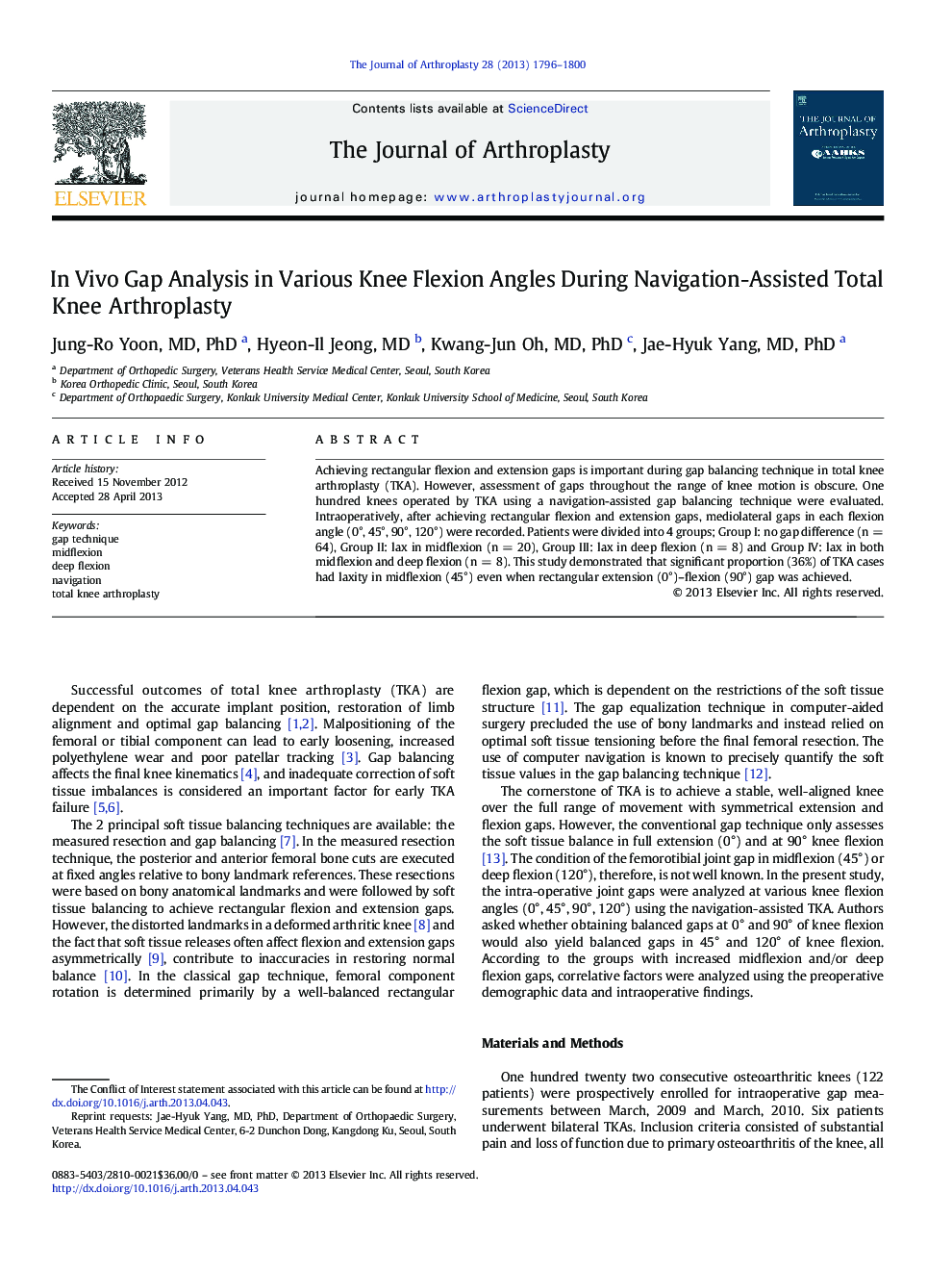| Article ID | Journal | Published Year | Pages | File Type |
|---|---|---|---|---|
| 4060637 | The Journal of Arthroplasty | 2013 | 5 Pages |
Achieving rectangular flexion and extension gaps is important during gap balancing technique in total knee arthroplasty (TKA). However, assessment of gaps throughout the range of knee motion is obscure. One hundred knees operated by TKA using a navigation-assisted gap balancing technique were evaluated. Intraoperatively, after achieving rectangular flexion and extension gaps, mediolateral gaps in each flexion angle (0°, 45°, 90°, 120°) were recorded. Patients were divided into 4 groups; Group I: no gap difference (n = 64), Group II: lax in midflexion (n = 20), Group III: lax in deep flexion (n = 8) and Group IV: lax in both midflexion and deep flexion (n = 8). This study demonstrated that significant proportion (36%) of TKA cases had laxity in midflexion (45°) even when rectangular extension (0°)–flexion (90°) gap was achieved.
